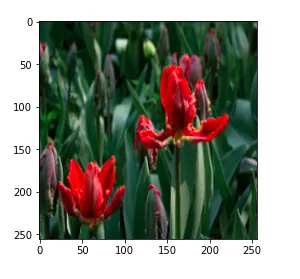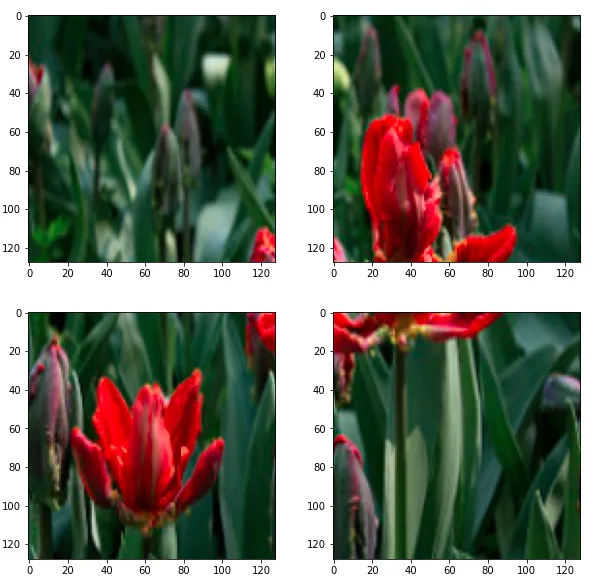以下是该方法的工作原理:
ksizes 用于决定每个补丁的尺寸,或者换句话说,每个补丁应包含多少像素。
strides 表示在原始图像中,从一个补丁的起始位置到下一个连续补丁的起始位置之间的间距长度。
rates 是一个数字,实际上意味着我们的补丁在原始图像中应该跳过rates个像素,才会有后续的像素进入我们的补丁。(下面的例子可以帮助说明这一点。)
padding 要么是"VALID",这意味着每个补丁必须完全包含在图像中,要么是"SAME",这意味着允许补丁不完整(剩余的像素将被填充为零)。
以下是一些示例代码和输出,以帮助演示其工作原理:
import tensorflow as tf
n = 10
images = [[[[x * n + y + 1] for y in range(n)] for x in range(n)]]
with tf.Session() as sess:
print tf.extract_image_patches(images=images, ksizes=[1, 3, 3, 1], strides=[1, 5, 5, 1], rates=[1, 1, 1, 1], padding='VALID').eval(), '\n\n'
print tf.extract_image_patches(images=images, ksizes=[1, 3, 3, 1], strides=[1, 5, 5, 1], rates=[1, 2, 2, 1], padding='VALID').eval(), '\n\n'
print tf.extract_image_patches(images=images, ksizes=[1, 4, 4, 1], strides=[1, 7, 7, 1], rates=[1, 1, 1, 1], padding='VALID').eval(), '\n\n'
print tf.extract_image_patches(images=images, ksizes=[1, 4, 4, 1], strides=[1, 7, 7, 1], rates=[1, 1, 1, 1], padding='SAME').eval()
输出:
[[[[ 1 2 3 11 12 13 21 22 23]
[ 6 7 8 16 17 18 26 27 28]]
[[51 52 53 61 62 63 71 72 73]
[56 57 58 66 67 68 76 77 78]]]]
[[[[ 1 3 5 21 23 25 41 43 45]
[ 6 8 10 26 28 30 46 48 50]]
[[ 51 53 55 71 73 75 91 93 95]
[ 56 58 60 76 78 80 96 98 100]]]]
[[[[ 1 2 3 4 11 12 13 14 21 22 23 24 31 32 33 34]]]]
[[[[ 1 2 3 4 11 12 13 14 21 22 23 24 31 32 33 34]
[ 8 9 10 0 18 19 20 0 28 29 30 0 38 39 40 0]]
[[ 71 72 73 74 81 82 83 84 91 92 93 94 0 0 0 0]
[ 78 79 80 0 88 89 90 0 98 99 100 0 0 0 0 0]]]]
因此,例如,我们的第一个结果看起来像以下内容:
* * * 4 5 * * * 9 10
* * * 14 15 * * * 19 20
* * * 24 25 * * * 29 30
31 32 33 34 35 36 37 38 39 40
41 42 43 44 45 46 47 48 49 50
* * * 54 55 * * * 59 60
* * * 64 65 * * * 69 70
* * * 74 75 * * * 79 80
81 82 83 84 85 86 87 88 89 90
91 92 93 94 95 96 97 98 99 100
如您所见,我们有2行2列的补丁,这就是out_rows 和 out_cols的含义。

